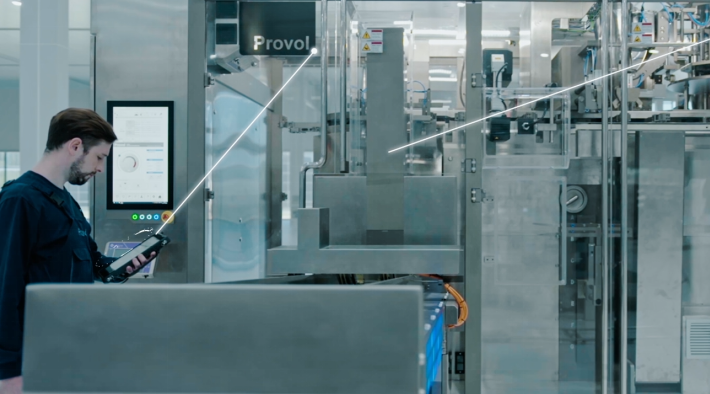The Rise of Automated Packaging in the Food Industry

According to a recent report, the food packaging market is expected to experience a Compound Annual Growth Rate (CAGR) of 5.5% between 2023 and 2028. This growth can be attributed to factors such as increasing demand, evolving lifestyles, and the growing need for more environmentally friendly packaging. These trends are driving innovation and creating new opportunities in this lucrative industry.
In order to fully capitalize on the opportunities presented in this highly competitive market, it is crucial for businesses to be flexible. However, the pressures of daily operations, resource shortages, rising costs, and regulatory requirements necessitate a scalable approach as well.
To overcome these challenges and secure a successful future, businesses of all sizes must prioritize accelerating output and distribution, as well as fostering flexibility and scalability. Are you prepared for these demands?
Flexibility and scalability - the key to future assurance
Flexibility and scalability are the cornerstones of future-proofing in the fragmented and competitive food packaging market of today. Production lines must be adaptable to changes and able to respond quickly. The ongoing revolution in the industry, fueled by innovation, has opened up new possibilities for food packaging lines.
In recent years, we have witnessed a surge in consumer demand for a wider range of products. The lessons learned during the pandemic, when operations came to a halt but there was a simultaneous increase in the preference for packaged and processed foods, have highlighted the importance of adaptability. Automation has emerged as a vital tool to achieve scalability in response to the numerous opportunities that lie ahead for food packaging businesses in the coming months and years.
Automated food packaging line - broader operational benefits
Automation brings a range of benefits when applied to the food packaging line, regardless of the level of implementation. It reduces reliance on manual resources, ensures consistency, accelerates output, and enables faster distribution. By choosing automatic packaging machines that minimize downtime during product changeovers, businesses can streamline their processes and prevent costly interruptions.
Automation also plays a significant role in complying with regulations related to hygiene in the food sector. By reducing human intervention in the packaging process, companies can effectively automate compliance requirements. Furthermore, automation helps alleviate the pressure on packaging lines during periods of high demand and seasonal fluctuations, reducing reliance on manual labor and increasing scalability. The latest digital operating systems can dramatically reduce training time and resource allocation.
Consistency in packaging standards is crucial for businesses to compete effectively in the market. Automation enables seamless consistency from product placement to the final stages of cartoning, ensuring that high-quality standards are consistently met. Additionally, automation increases visibility and control throughout the entire packaging process, enhancing quality control and meeting the stringent regulations in the food production and packaging environments.
5 key points for selecting packaging machines
When selecting a packaging machine, there are five key points to consider.
Firstly, the speed of the machinery is important to meet the production requirements of your business. Packaging machinery outperforms manual labor in terms of efficiency and quantity. If time-to-market is critical for your business, investing in packaging machinery will significantly streamline operations.
Secondly, the type of machine chosen affects the training hours and education level required to operate it. Different machines have varying training requirements, and it's essential to consider the capabilities and knowledge of your workforce. Some machines, such as Premade Pouch Machines, require minimal training, while others like Form-Fill-Seal equipment demand more extensive operator knowledge.
Thirdly, the costs associated with packaging machinery should be carefully evaluated, including both upfront investment and ongoing operation and maintenance expenses. While some machines may have higher initial costs, their improved efficiencies and profitability can yield significant long-term benefits. Conducting a machinery analysis, in which a representative visits and evaluates your current packaging line, can help identify areas for improvement and ensure that you invest in the right machine for your business operations.
Fourthly, equipment maintenance is a critical factor to consider when reviewing your packaging process. It is important to focus not only on initial costs but also on operator training, spare parts availability, and proper machine maintenance. While machines with higher upfront costs may seem more expensive, they often offer faster speeds, higher efficiencies, lower maintenance requirements, and quicker changeover, saving both time and money in the long run.
Lastly, when selecting suppliers for packaging machinery, it is essential to work with qualified and reputable providers. Consider their track record, installed base, and success in delivering systems for similar applications. Collaborating with established suppliers ensures the reliability and effectiveness of the machinery you invest in.
By embracing flexibility, scalability, and automation in the food packaging industry, businesses can navigate the competitive landscape, meet consumer demands, and secure a prosperous future.
If you want to know more information, welcome contact us: http://www.provol.com/en/connect/business.html




